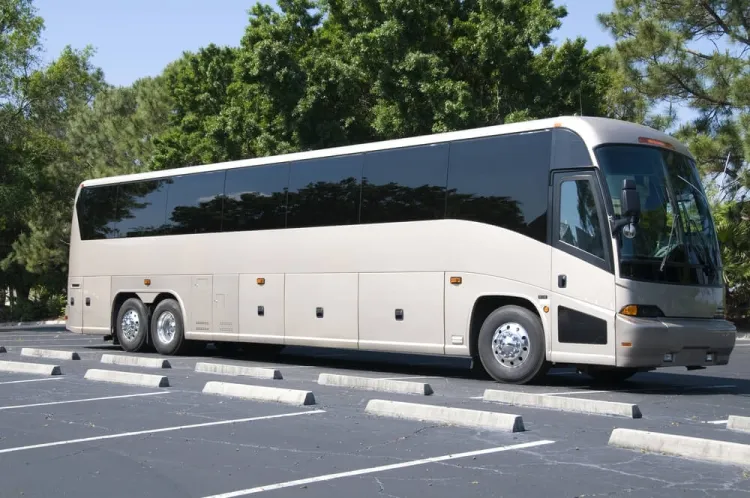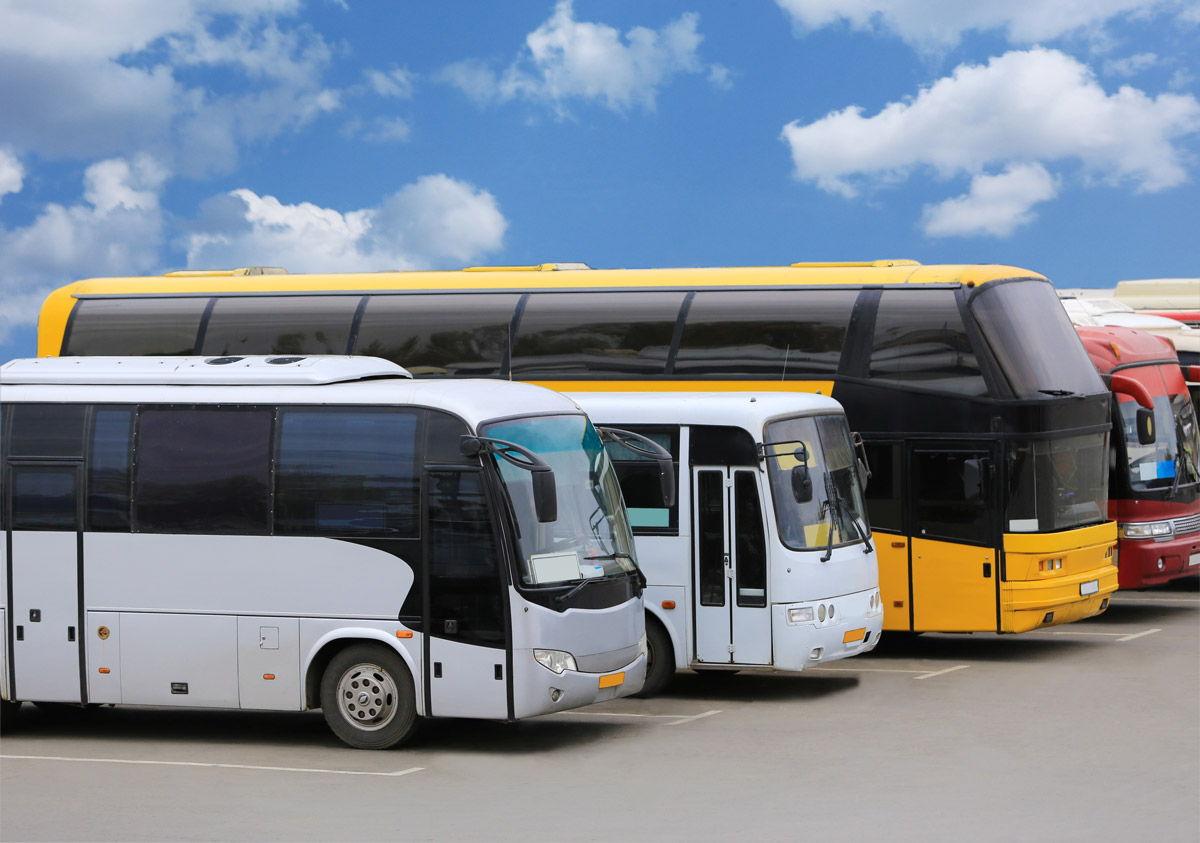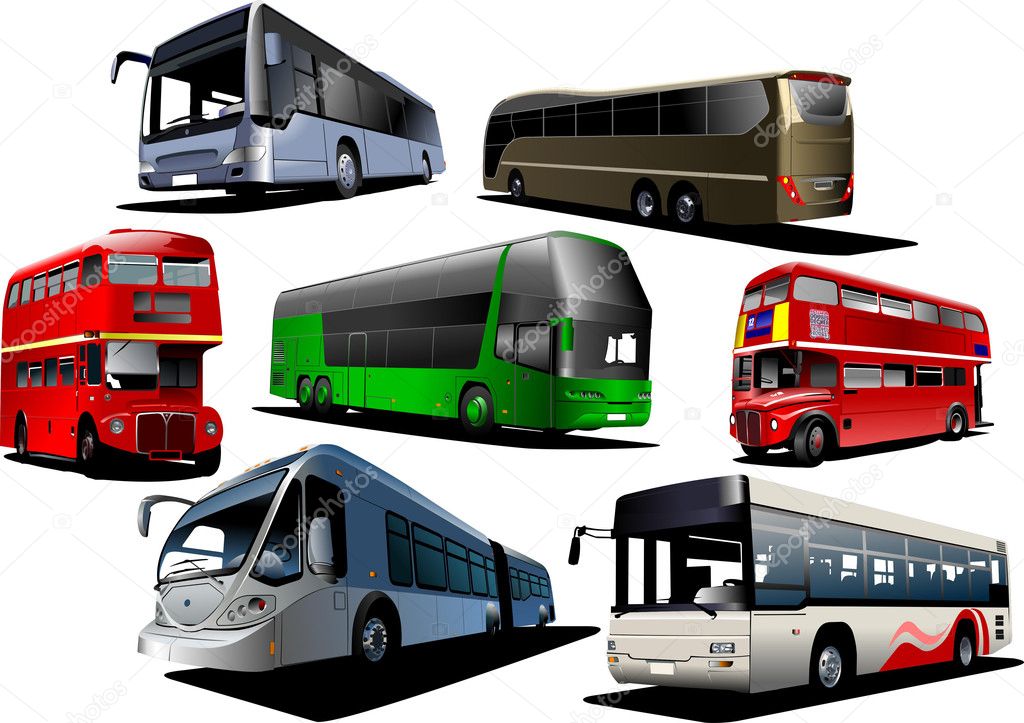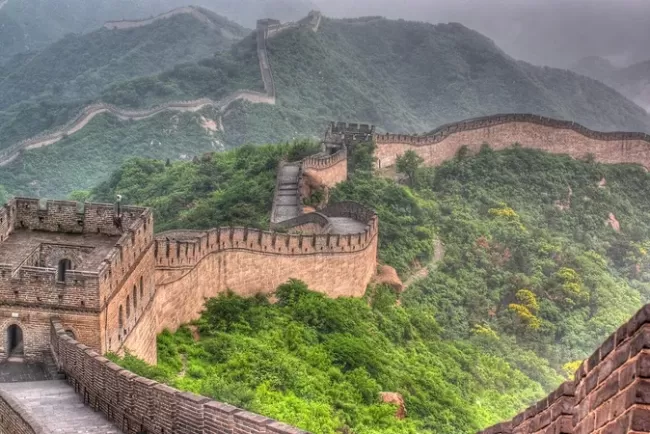From City Streets to Country Roads: The Essential Role of Buses...!!!
Buses are essential for transportation in both urban and rural areas, offering an efficient way for people to get around. There are several types of buses, each designed for specific purposes and varying passenger capacities.

1. City Buses
City buses, also called transit or urban buses, are meant for short-distance travel within cities and metropolitan areas. They run on fixed routes with frequent stops and are commonly seen in urban settings. These buses are designed for easy boarding and alighting, often featuring low floors, multiple doors, and standing areas to accommodate a large number of passengers.
Features:
- Low floors for easy access
- Multiple doors for quick boarding and exit
- High passenger capacity
- Equipped with handrails and seats for standing passengers

2. Intercity Buses
Intercity buses are intended for longer-distance travel between cities or towns. They provide more comfort and amenities compared to city buses, as passengers typically spend more time onboard. Intercity buses may include features like reclining seats, air conditioning, onboard restrooms, and luggage compartments.
Features:
- Comfortable, reclining seats
- Air conditioning and heating
- Onboard restrooms
- Luggage compartments
3. School Buses
School buses are specifically designed to transport students to and from school. They emphasize safety, featuring distinctive yellow paint, flashing lights, and stop signs. School buses often have high-backed seats and are equipped with seat belts to ensure the safety of young passengers.
Features:
- Distinctive yellow color
- Flashing lights and stop signs
- High-backed seats and seat belts
- Safety features for young passengers
4. Shuttle Buses
Shuttle buses are typically used for short trips, such as transporting passengers between airport terminals, hotels, and parking lots. These buses are smaller than city or intercity buses and can easily navigate tight spaces. Shuttle buses are often used by hotels, airports, and private companies to provide convenient transportation services.
Features:
- Smaller size for easy maneuverability
- Designed for short trips
- Often used by hotels, airports, and private companies
- May have amenities like luggage racks and air conditioning
5. Double-Decker Buses
Double-decker buses have two levels of seating, allowing for higher passenger capacity without increasing the bus's footprint. These buses are commonly used in cities with high passenger demand and are also popular for sightseeing tours. Double-decker buses provide passengers with elevated views of the surroundings, making them a unique and enjoyable mode of transportation.
Features:
- Two levels of seating
- High passenger capacity
- Popular for city transportation and sightseeing tours
- Provides elevated views of surroundings

6. Articulated Buses
Articulated buses, also known as bendy buses, have a flexible joint in the middle, enabling them to accommodate more passengers while navigating tight turns. These buses are often used on busy routes with high passenger demand. The articulated design helps distribute the bus's weight and provides a smooth ride for passengers.
Features:
- Flexible joint in the middle
- High passenger capacity
- Suitable for busy routes
- Smooth ride and efficient navigation
7. Electric Buses
Electric buses are powered by electric batteries instead of traditional internal combustion engines. These buses are environmentally friendly, producing zero emissions and reducing air pollution. Electric buses are becoming increasingly popular in cities worldwide as a sustainable alternative to diesel-powered buses.
Features:
- Powered by electric batteries
- Zero emissions and reduced air pollution
- Environmentally friendly
- Gaining popularity in urban areas
8. Tour Buses
Tour buses are designed for sightseeing and long-distance travel, often equipped with amenities to enhance the passenger experience. These buses may include features like panoramic windows, comfortable seating, audio guides, and onboard entertainment systems. Tour buses are commonly used for guided tours, charter services, and group travel.
Features:
- Panoramic windows for sightseeing
- Comfortable seating and amenities
- Audio guides and entertainment systems
- Used for guided tours and group travel
Buses come in various types and designs, each serving a unique purpose and catering to different passenger needs. From city buses to tour buses, these vehicles are crucial to public transportation systems, providing reliable and efficient travel options for people around the world. As technology advances, buses continue to evolve, offering improved comfort, safety, and sustainability for passengers.
What's Your Reaction?

















